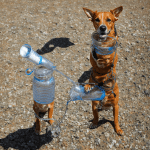In an ever-evolving technological world, drones are increasingly becoming a crucial asset in various sectors, including personal search and rescue operations. Equipped with the latest technology such as thermal imaging capabilities, GPS tracking, and high-resolution cameras, drones are revolutionizing the way search and rescue missions are conducted. They offer a swift, efficient, and risk-free alternative to traditional methods saving many lives every year. This article delves into the significant ways drones are assisting in personal search and rescue operations.
Enhancing Speed and Efficiency
Search and rescue operations are time-sensitive, as every passing minute reduces the likelihood of finding the person alive. Traditional search methods can be slow and labor-intensive, especially in hard-to-reach or dangerous areas.
Sujet a lire : How Are Personal Drones Contributing to Artistic Expression?
Drones can cover a large area in a short amount of time, providing real-time data to the search teams. This can significantly speed up the search process and increase the chances of finding the missing persons in time. Drones equipped with GPS technology can pinpoint the exact location of the person, making the rescue process faster and more efficient.
In addition, drones can be deployed in any weather conditions, at any time of the day or night, unlike human teams which might be hampered by severe weather or darkness.
Dans le meme genre : What Are the Latest Innovations in Drone Propulsion Systems?
Mitigating Risks and Hazards
Search and rescue operations often involve navigating treacherous terrains or dangerous situations, exposing the rescue teams to various risks and hazards.
Drones can access areas that are hazardous or difficult for humans to reach. They can fly over rough terrains, dense forests, or extreme weather conditions, reducing the risk to human life. Furthermore, drones equipped with thermal imaging capabilities can locate persons even in low visibility conditions, such as during the night or in foggy weather.
Drones also eliminate the need for rescue teams to physically enter potentially dangerous areas. Instead, they provide a safe and remote way to conduct search and rescue missions, thereby safeguarding the lives of the rescuers.
Providing Accurate and Comprehensive Data
The success of a search and rescue operation largely depends on the availability and accuracy of data. Drones, equipped with advanced technology, can gather comprehensive and precise data, thereby improving the efficacy of these operations.
High-resolution cameras on drones can capture detailed images of the search area, allowing for a thorough analysis of the terrain and environment. This can prove instrumental in identifying any signs of the missing person, such as footprints, clothing, or any other potential clues.
Thermal imaging capabilities allow drones to detect heat signatures from the human body, even in dense vegetation or dark conditions. This can significantly increase the chances of locating the person, especially in more challenging environments.
Improving Coordination and Communication
In large-scale search and rescue operations, ensuring effective coordination and communication between different teams can be a daunting task. Drones can significantly alleviate this challenge by providing a centralized source of real-time data.
The data collected by drones can be instantly transmitted to the command center, allowing for a seamless flow of information. This enhances coordination between different teams, allowing them to work in unison towards the common goal.
Furthermore, drones can act as communication relays, especially in areas with poor network coverage. They can facilitate the relay of critical information between the teams and the command center, ensuring that every team member is always on the same page.
Reducing Operational Costs
Lastly, drones can significantly reduce the operational costs associated with search and rescue missions. Traditional methods involve the use of expensive equipment, such as helicopters or boats, and a large number of personnel, all of which can be costly.
In contrast, drones are relatively cheaper to purchase and maintain. They require fewer personnel to operate, thereby reducing labor costs. Furthermore, the swift and efficient nature of drone operations can reduce the duration of the search mission, further bringing down the overall costs.
In summary, drones are transforming the way personal search and rescue operations are conducted, making them faster, safer, and more efficient. As technology continues to advance, we can only expect the role of drones in these operations to continue to grow.
Elevating Situational Awareness
Situational awareness is paramount in successfully executing search and rescue operations. Unmanned aerial vehicles, or drones, provide an excellent platform for elevating this critical aspect of SAR operations.
Drones equipped with high-resolution cameras and thermal imaging capabilities can provide a bird’s eye view of the entire search area, offering a comprehensive perspective that is not available to rescue teams on the ground. The real-time visuals and data relayed by these drones can help teams identify potential obstacles, hazards, or points of interest, thereby increasing their situational awareness.
For instance, a drone could reveal a dangerous section of a forest that would be hazardous for a ground team to traverse. Alternatively, a thermal image captured by a drone could point out the heat signature of a missing person in an otherwise inaccessible area. Such information can guide the rescue efforts more effectively, reducing the time taken to locate the missing person.
In addition to enhancing safety operations, drones can also transmit live video feeds to the command center. This allows decision-makers to have a real-time view of the operation, enabling them to make more informed decisions and provide better support to the ground teams. From the strategic placement of rescue teams to the deployment of resources, the improved situational awareness provided by drones can significantly enhance the effectiveness of the operation.
Revolutionizing Night-Time Search and Rescue
One of the most challenging aspects of search and rescue missions is conducting operations in low-light or night-time conditions. Traditional methods often struggle in these situations due to decreased visibility and increased risk. However, drones are fundamentally changing this aspect of rescue operations.
Equipped with thermal imaging capabilities, drones can perform exceptionally well in low-light or night-time conditions. They can detect heat signatures from the human body, even in complete darkness, drastically improving the chances of locating missing persons. Their ability to carry out night-time search and rescue operations represents a significant advancement in the field, as many incidents occur or continue during the night.
Furthermore, these capabilities are not limited to fixed-wing drones alone. Multi-rotor drones, known for their agility and maneuverability, can also be outfitted with thermal imaging technology. This makes them particularly useful in urban settings, where they can navigate around buildings or in confined spaces to locate missing persons.
We must also consider the safety of the rescue teams. Night-time operations often expose rescuers to increased risks. However, with drones taking the lead, teams can conduct their operations from a safe distance, minimizing the risk to their personnel.
Conclusion
As we have seen, drones are revolutionizing personal search and rescue operations in many ways. Their speed and efficiency, coupled with their ability to mitigate risks and hazards, are redefining how such operations are conducted. The accurate and comprehensive data they provide enhances both situational awareness and operational success. Furthermore, their impact on coordination and communication cannot be overstated, and their ability to conduct night-time operations is a game-changer in the field.
Moreover, drones offer a significant cost advantage over traditional methods, making rescue operations more feasible and accessible. They can be deployed in various situations, from locating missing persons in vast forests to aiding in urban rescues.
While we continue to marvel at the current capabilities of search and rescue drones, it is even more exciting to imagine the potential advancements that future technology holds. Whatever the future brings, it is clear that drones are and will continue to be an invaluable tool in personal search and rescue operations.











